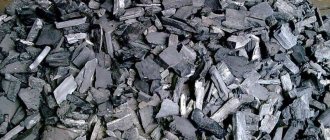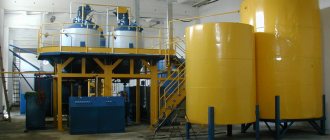Blog readers under the age of 30 most likely do not remember the time when alcohol production was the exclusive prerogative of the state. Any attempts to “break off” this “monopoly pie” resulted in inevitable criminal liability. Now, formally, of course, this area is open to anyone. Pay excise taxes and duties, get a license, purchase equipment that complies with GOST standards, and produce as much alcohol as you want.
Brief analysis of the business: Costs of organizing a business: 350,000 – 1,500,000 rubles Relevant for cities with a population: no restrictions Situation in the industry: the production sector is developed Difficulty of organizing a business: 4/5 Payback: from 3 to 6 months
Everything looks smooth. In reality, everything is much more complicated. The production of ethyl alcohol, which is used in the manufacture of alcoholic beverages, is such a “tidbit” that brings in huge profits that large manufacturers who have been working in this market for decades and have good incentives will not just let you enter this business. in the relevant structures.
However, you can work quite calmly until a certain point, until the production volume exceeds the level when your mini-alcohol plant turns from a small enterprise into a serious threat to competition. These are the realities of today, which other sources are unlikely to tell you about.
But! Firstly, as the great commander Suvorov said: “The city takes courage,” i.e. if you take a fairly tough position, in the future you can still reach a fairly high profit threshold and promote your brand. And secondly, there are also positive aspects, namely that alcohol production will still allow you to earn your first million dollars. Of course, if everything is done correctly.
A little chemistry: the famous formula C2H5OH is ethyl food alcohol. The formula of methyl (technical) alcohol is CH3OH.
Relevance of the alcohol production business
There are several types of alcohol, and each of them is in demand in its own area. Most often, alcohol is divided into ethyl (ethanol) and methyl (methanol).
Both of these substances have common properties: any alcohol is a volatile and flammable substance without color. But methanol is much more toxic compared to ethanol.
The chemical formula of ethanol is C2H5OH. It is lighter than water and has a pungent taste, is present in almost all alcoholic drinks and affects the central nervous system. It is obtained by fermentation of organic substances or synthetically.
It is used:
- as fuel,
- in the production of alcohol thermometers,
- as a solvent
- as a disinfectant,
- in the food industry,
- in medicine,
- in the chemical industry,
- in the production of cosmetics and perfumes.
Methanol (chemical formula CH3OH) is much more toxic, and its entry into the body can lead to severe poisoning and even death. This type of alcohol is mainly used to produce fuel, including rocket and aviation fuel.
What is included in the design for preparing alcohol
Extracting pure alcohol at home is completely similar to industrial alcohol production. This can be judged by the equipment of modern mini-distilleries. Their design includes the same elements as in factory installations, only much smaller in size. It is worth remembering that the presence of certain parts determines the price category of units for the production of alcohol - the more expensive the device, the more components it includes. An average-cost household mini-distillery consists of the following elements:
- unit for water-thermal processing of the mixture;
- pure culture mixer;
- fermentation vessels;
- unit for distilling the mixture;
- rectification device;
- installation for re-cleaning mash;
- device for absolutization - the final stage of mash cleaning.
Equipment of a modern mini-distillery
The unit, which includes all these parts, works according to the following principle. First, the mash enters the heat treatment unit. There it is exposed to high temperatures, and also undergoes crushing with a hammer crusher in specially created conditions. Then the crushed mash is mixed with water and alpha-amylase, a special enzyme preparation.
After this, the resulting mixture is exposed to a powerful steam jet and treated with enzymes. This is how the mini-distillery produces high-quality and chilled alcohol, which can then be mixed with plant components. As a result of this, folk craftsmen receive a healing tincture of propolis in vodka or alcohol and other natural medicines.
It is important to remember that in order to achieve a good result when processing mash at home, the latter must be mixed correctly. To do this, it is necessary to strictly follow the preparation technology; all components of the mixture must be added in optimal proportions and fermented under certain conditions.
Alcohol production technology
The simplest organic way to produce alcohol is through the process of fermentation. But on an industrial scale I often use hydration technology. This is especially true if the original product contains wood. There are two methods of hydration:
- at high temperature and high pressure with the participation of catalysts,
- through the production of intermediate ester H2SO4 at lower temperature and pressure.
As for production from biological raw materials, it includes several steps:
- The raw material (usually grain) is prepared and purified from impurities by sifting and blowing under a stream of air.
- The raw materials are crushed to a powder state.
- Then add water at a temperature of about 150°C, stir thoroughly and cook for a few minutes to an hour.
- The next step is cooling to 57°C and adding malted milk. The resulting wort contains about 20% sugar.
- The wort is mixed with yeast, which starts the fermentation process, which lasts approximately seven days.
- The resulting mash is first heated and then cooled. This process is called alcohol distillation.
- Ethanol is purified from fusel oils. The output is ethyl alcohol.
If you choose another method, the process and technology will be different.
Vodka production technology
To produce such a traditional alcoholic drink as vodka, a unique technology is used:
- the basis is taken from previously prepared raw materials: sugar and yeast, which are loaded into a special mash tank;
- the fundamental raw materials are kept in the mash tank for a week - during this time the alcohol content in the mixture reaches 15%;
- the finished mixture evaporates ethanol using a distillation apparatus and cools the vapor;
- the resulting ethanol goes through a fractional distillation stage;
- the result of the second stage of distillation is the production of pure ethyl alcohol.
To ensure continuity of the process and increase production efficiency, a weekly norm should be loaded into the mash tank.
Starting a distillery - business plan
We will analyze all the stages of starting a business in the production of alcohol. If you want to launch a full-fledged plant with a capacity of 30 to 100 thousand liters per day, you will need large start-up capital.
Room
The minimum required area is approximately 140 sq. meters.
The premises need to be zoned, since different workshops cannot be located in the same place.
- equipment should occupy no more than 33% of the area.
- High ceilings required.
- communications: it is necessary to have a water supply system, a sewerage system, a heating system, supply and exhaust ventilation, and in the alcohol distillation shop, floors with a slight slope are needed.
- floors should be covered with impermeable materials, and walls should be treated with moisture-repellent materials.
Equipment
Sample list of equipment:
- distillation column;
- chopper;
- tanks;
- distiller;
- separators;
- centrifugal filter;
- heat treatment device;
- evaporator;
- alcohol meters;
- heaters and compressors;
- necessary container.
The equipment can be purchased separately, in parts, or the production line can be purchased immediately. Its price ranges from half a million to several million rubles - it all depends on production volumes.
You will also need work uniforms for employees, furniture and supplies.
Necessary equipment
Equipment for the production of alcohol consists of the following main components:
- Alcohol absolutization apparatus.
- Distillation column.
- Fermentation tanks;
- Installation of the primary stage.
- Molasses processing apparatus.
- Equipment for heat treatment of raw materials.
The cost of equipment depends on its power. If you take equipment of average power with a productivity of approximately 12 liters per hour, it will cost 2.6 thousand euros. And this does not take into account additional equipment: alcohol meters, refrigerators, thermoelectric heaters, etc.
Factory equipment has much higher productivity. In this case, the distillation column will cost 900-3000 rubles. In general, purchasing the necessary equipment for a mini-plant will cost 70 thousand rubles.
Documentation and licensing
Licensing for this type of activity is mandatory. You need to register a legal entity in the form of LLC or OJSC. Choose the main tax system.
Suitable OKVED codes: 11.01.4 and 46.34.22
The license is valid from one to 5 years. The license size depends on the type of alcohol. For example, if you plan to produce non-food products containing alcohol, an annual license will cost 800 thousand rubles, and when producing ethyl alcohol or alcoholic products you will have to pay 9.5 million rubles per year.
What is included in the package of documents, check with the Federal Tax Service at the place of registration. The basic set of papers includes constituent documentation, documents on registration with the Federal Tax Service and registration of the enterprise, an extract from the unified state register of legal entities, lease agreements and permits from firefighters, Sanitary and Epidemiological Stations and environmental control, certificates for purchased equipment, as well as confirmation of payment of fees.
To obtain permission to produce alcoholic beverages, you must contact Rosalkogolregulirovanie. Receiving documents takes about 30 days, but in case of refusal, the entrepreneur loses the paid fee.
Organizational plan for alcohol production
Registration, certification and licensing
Completing the mandatory procedure for state registration of an enterprise is the initial stage of organizational measures for the implementation of this business project. To carry out activities in the production of alcohol-containing alcoholic beverages, you must register as an individual entrepreneur or legal entity. The best option for small and medium-sized businesses is to work under a simplified taxation system, which involves regular payment of 6% of total income or 15% of net profit.
It is mandatory for an entrepreneur to obtain an appropriate license to conduct business in the production and sale of alcoholic beverages. To obtain a license, you must submit a package of necessary documents and a receipt for payment of the state fee to the registering authority.
Among other things, an entrepreneur should be concerned about passing an inspection by the relevant authorities: the local fire inspectorate and the tax authority. It is also necessary to obtain permits for the rented premises, certificates for the equipment used, raw materials and products sold.
Workshop space
The basis of organizational and preparatory activities, as well as an element of the company’s competitiveness, is the correct choice of the location of the company and premises for the workshop for the production of alcoholic beverages.
According to the rules, the workshop room must be three times larger than the room storing the equipment used. In addition, the height of the ceilings of the workshop should imply the possibility of accommodating the production line. It is also necessary to provide adequate lighting, a reliable ventilation system and heating.
Purchase of equipment
Since production technology differs slightly in specific approaches to the production of a particular alcohol-containing drink, to implement a business project you will need a standard list of necessary equipment:
- tanks (mash tanks);
- pasteurizers;
- automated equipment for bottling and packaging of finished products;
- water purification devices;
- conveyors;
- other equipment.
Search for suppliers of raw materials
Since finished products, as well as raw materials used in the production process, are subject to state certification, it is necessary to establish cooperation in advance with local suppliers of high-quality raw materials for the production of alcoholic beverages at wholesale prices.
Staff
In addition to direct technology specialists, the enterprise will need administrative workers, technical personnel and security. A novice entrepreneur takes on leadership functions in the first stages of organizing a business, and subsequently employs a director. For accounting services and initial marketing campaign, as well as legal support, specialist agencies should be contacted as needed.
Sales channels of ethyl, technical, medical alcohol
Sales channels need to be thought out in advance. The easiest way is to look for large wholesale clients in the region where your production is located - this will allow you to establish personal contacts and save on transportation costs.
Since we are talking about large deliveries, traditional advertising methods do not work here. You need to draw up a competent commercial proposal and send it to enterprises that are interested in your products (the type of enterprise depends on the type of alcohol or alcohol-containing products being produced). These could be pharmaceutical companies, cosmetics manufacturers, chemical industry enterprises, wholesale buyers of alcohol.
Sales issues
The next task that needs to be solved before your business is launched is product distribution channels. It is necessary to assess the needs of the local market, competition, as well as options for selling goods in other regions.
Please note that it is most profitable to sell alcohol in the region where it is produced. The fact is that the excise tax on it makes the product quite expensive for the end consumer. When transporting to other regions, logistics costs are added to the price.
In general, alcohol can be sold in the following areas:
- food industry (alcohol-based alcohol products);
- pharmaceutical industry;
- chemical production;
- production of cosmetics;
- perfume production.
How much money do you need to start a business?
We have already found out that large expenses lie ahead - just obtaining a license or purchasing equipment requires millions of investments. .
An approximate list of costs is presented in the table
| Start-up costs | Price in rubles |
| Registration of a legal entity, including legal services | 100 thousand |
| Obtaining permits and licenses | 9.5 million |
| Purchase of equipment, furniture | 7 - 10 million rubles. |
| Repair and rental of premises | 200 thousand |
| Raw materials | 100 thousand |
| Transport | 1.5 million |
| 100 thousand | |
| Reserve | 5 million |
| Total | 23.5 million rubles. |
In addition, you will have ongoing expenses for rent, purchase of raw materials, wages, utilities, taxes, repairs and maintenance - about 2.5 million rubles per month.
Difficulties and prospects
The complexity of business lies in the need to constantly monitor the quality of products. Also, problems often arise with excise legislation, which changes quite often. You must always be aware of its changes so as not to get fined.
Over time, when alcohol production reaches the maximum volumes that the local market can accept, the business can be expanded into new areas that require the use of alcohol. These can be chemical, pharmacological, perfumery, food products. Today, the direction of producing environmentally friendly fuel is promising.
It is also possible to establish the production of feed for farm animals. From a liter of alcohol produced, approximately 13 liters of stillage remains, which is the basis for such feed.
How much can you earn from alcohol production?
The cost, depending on the type of alcohol, ranges from 10 to 30 rubles. per liter To reduce costs, work with producers of raw materials, and not with intermediaries who increase the price by an average of two times.
Based on the production of 1,500 liters of food alcohol per day from wheat, the purchase of raw materials will cost about 950 thousand per month.
With an average wholesale cost of 90 rubles per liter of product per month, you can earn about 4 million rubles. which, minus monthly expenses of 2.5 million, gives a profit of 1.5 million rubles.
It will take an average of two to three years to recoup the initial investment.
Selection of raw materials and sources of their supply
When the choice of the type of alcohol production has been made, it is necessary to move on to the selection of raw materials for its production. There is no competition - sugar. It produces the largest amount of finished product when distilling mash - 60%. But using only sugar, alcohol production will be very expensive. Therefore, it is necessary to consider the use of other types of raw materials:
- grain products;
- sugar beets and fruit;
- potato.
It should be taken into account that the yield of finished products here is low - from 10% to 30%. When making technical alcohol, you can mix two different mixtures for a larger yield of finished products and lower costs. But for food alcohol you cannot mix it and the raw materials must be of high quality.
Possible business risks
This business has significant risks:
- risk of unreliable suppliers. The quality of raw materials for alcohol is of great importance. If suppliers fail you, you will suffer losses.
- a large state fee, which can be lost in case of refusal to obtain a license.
- Greater competition in the market due to increased demand for alcohol and disinfectants.
- the risk of violation of production technology, which will adversely affect the taste of the product and your reputation.
- strict control and constant checks to ensure that alcohol complies with GOST standards. There is a risk of receiving large fines.
Existing types of alcohol
The type of alcohol is based on the raw materials used for distillation. Another classification criterion is the degree of purification of the product. There are two main types of it: technical and food.
Technical is extracted from petroleum products and wood that have undergone acid hydrolysis. Its use in food is strictly prohibited because it contains too many harmful substances. Food is made from fruits, sugar syrup, beets, root vegetables, and grains.
Further, alcohol is divided into classes according to the degree of its purification - rectification. The higher it is, the fewer impurities it contains, the more expensive the product becomes. To obtain absolute alcohol, water is removed from the rectified product using a special technology.
Food alcohols are divided into:
- grains (for vodka, whiskey);
- grape (for brandy);
- fruit: pears and apples;
- berries and fruits with large seeds;
- berries with small seeds.
Product Description
Ethanol is a monohydric substance with the formula C2H5OH. Under normal conditions it is a flammable transparent liquid with a specific odor. When stored in an open container, it partially evaporates.
Food ethanol is divided into first-grade and highly purified products. The latter is the basis of alcoholic drinks. In Russia, Kazakhstan, Armenia, according to GOST R 5962-2013, depending on the degree of purification, alcohol is divided into:
- “First grade” - not used in alcoholic beverages;
- “Highly purified alcohol” is produced from a mixture of grain, potatoes, sugar beets, and black molasses (in any proportions). Subject to minimal filtration from fusel oils and impurities. Usually it is used to make tinctures, liqueurs and economy-segment vodka;
- “Basis” - produced from any agricultural products, except fruits.
- “Lux” - grains and their mixtures are used as raw materials;
- “Extra” - made from a mixture of grains and potatoes with a starch content of no more than 60% of the total mixture;
- “Alpha” - the raw materials are rye, wheat or mixtures thereof.
"Alpha" has a minimal content of harmful impurities compared to other types.
Table 1. Organoleptic characteristics of ethanol (GOST 5962-2013).
| Index | Characteristic |
| Appearance | Clear liquid without solid components |
| Taste and smell | Characteristic of products serving as feedstock. There are no foreign tastes or aromas. |
| Color | Absent |
Ethanol belongs to the category of flammable substances and has a hazard class of 3.
The main stages of manufacturing vodka products
Making vodka is a simple production process that requires adherence to certain technology. The starting raw material for vodka products is sprouted grain, which ferments in special vats. The fermentation product is processed, poured into a separate container, then heated and condensed. The result is purified alcohol. An equally important component in the production of vodka is water, which is best taken from environmentally friendly wells. Under no circumstances should you use distilled or boiled water, because the output will be a hard, low-quality product. During the sorting process, alcohol and water are mixed, and the resulting mixture is purified and filtered. Elite vodka is additionally processed with silver, milk or other components.
After this, the vodka goes into “rest” tanks, where chemical processes slow down and alcohol and water are evenly distributed. The more time the finished product sits, the richer and fuller the taste of vodka will be. According to the standard, this process should take at least two days. Some manufacturers increase this period to 7 days, and premium varieties of vodka can “rest” for three months. The process of filling finished vodka into bottles is carried out on special automatic lines. The final stage is packaging and sending to a warehouse for storage.











